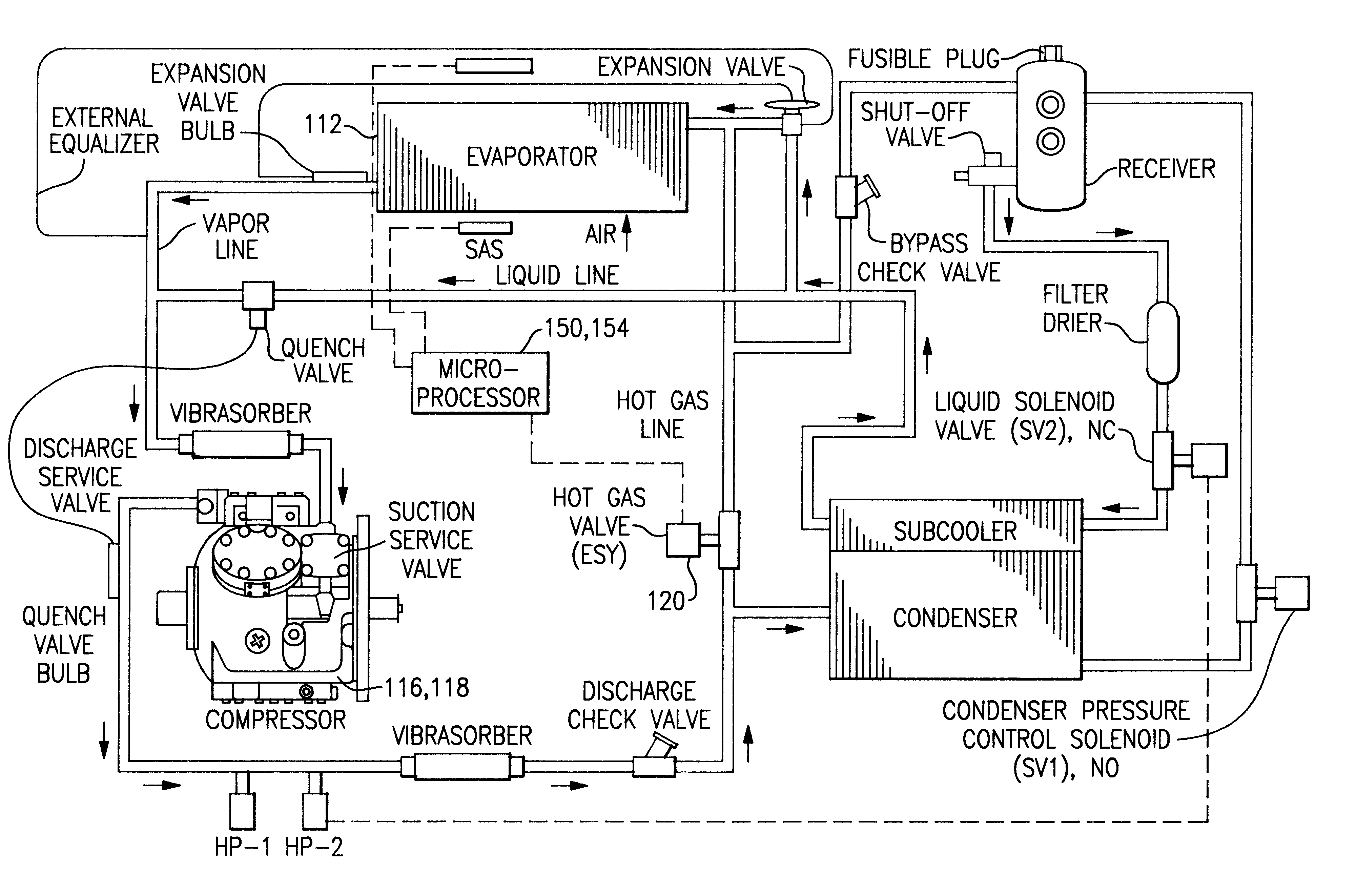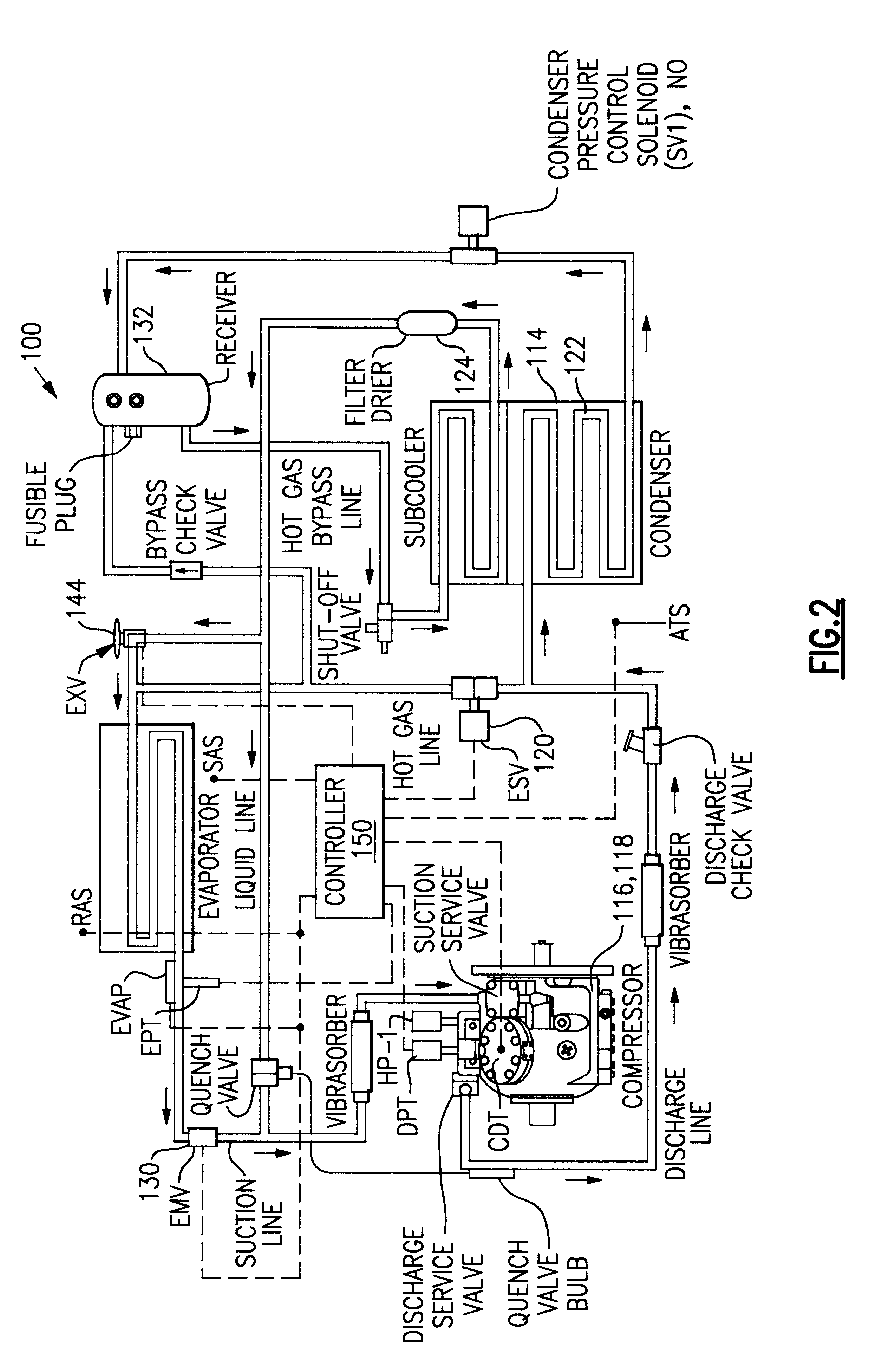Integrated electronic refrigerant management system
a technology of electronic refrigerant management and electronic control, which is applied in the field of control systems for transport refrigeration systems, can solve the problems of unfavorable engine load reduction, unfavorable internal control, and unfavorable internal control, so as to maximize the capacity of transport refrigeration systems and reduce engine load. , the effect of minimizing the level of superheating
- Summary
- Abstract
- Description
- Claims
- Application Information
AI Technical Summary
Benefits of technology
Problems solved by technology
Method used
Image
Examples
Embodiment Construction
The invention that is the subject of the present application is one of a series of applications dealing with transport refrigeration system design and control, the other copending applications including: "Electronic Hot Gas Valve"; "Electronic Expansion Valve Control System"; "Voltage Control Using Engine Speed"; "Economy Mode For Transport Refrigeration Units"; "Superheat Control for Optimum Capacity Under Power Limitation and Using a Suction Modulation Valve"; "High Engine Coolant Temperature Control"; "Generator Power Management"; and "Electronic Expansion Valve Control Without Pressure Sensor Reading," all of which are assigned to the assignees of the present invention and which are hereby incorporated herein by reference. These inventions are most preferably designed for use in transportation refrigeration systems of the type described in copending applications entitled: "Transport Refrigeration Unit With Non-Synchronous Generator Power System;" Electrically Powered Trailer Ref...
PUM
 Login to View More
Login to View More Abstract
Description
Claims
Application Information
 Login to View More
Login to View More - R&D Engineer
- R&D Manager
- IP Professional
- Industry Leading Data Capabilities
- Powerful AI technology
- Patent DNA Extraction
Browse by: Latest US Patents, China's latest patents, Technical Efficacy Thesaurus, Application Domain, Technology Topic, Popular Technical Reports.
© 2024 PatSnap. All rights reserved.Legal|Privacy policy|Modern Slavery Act Transparency Statement|Sitemap|About US| Contact US: help@patsnap.com










